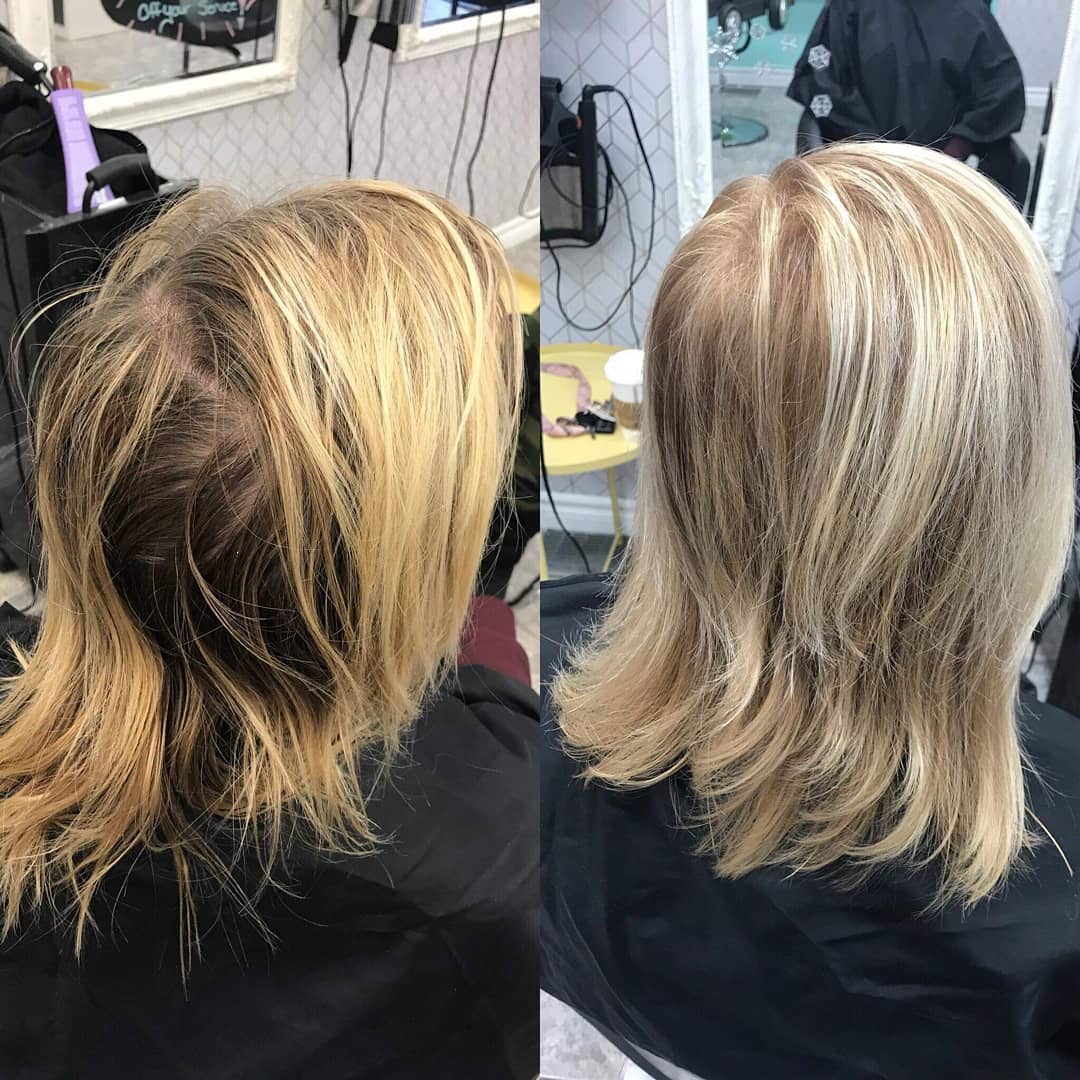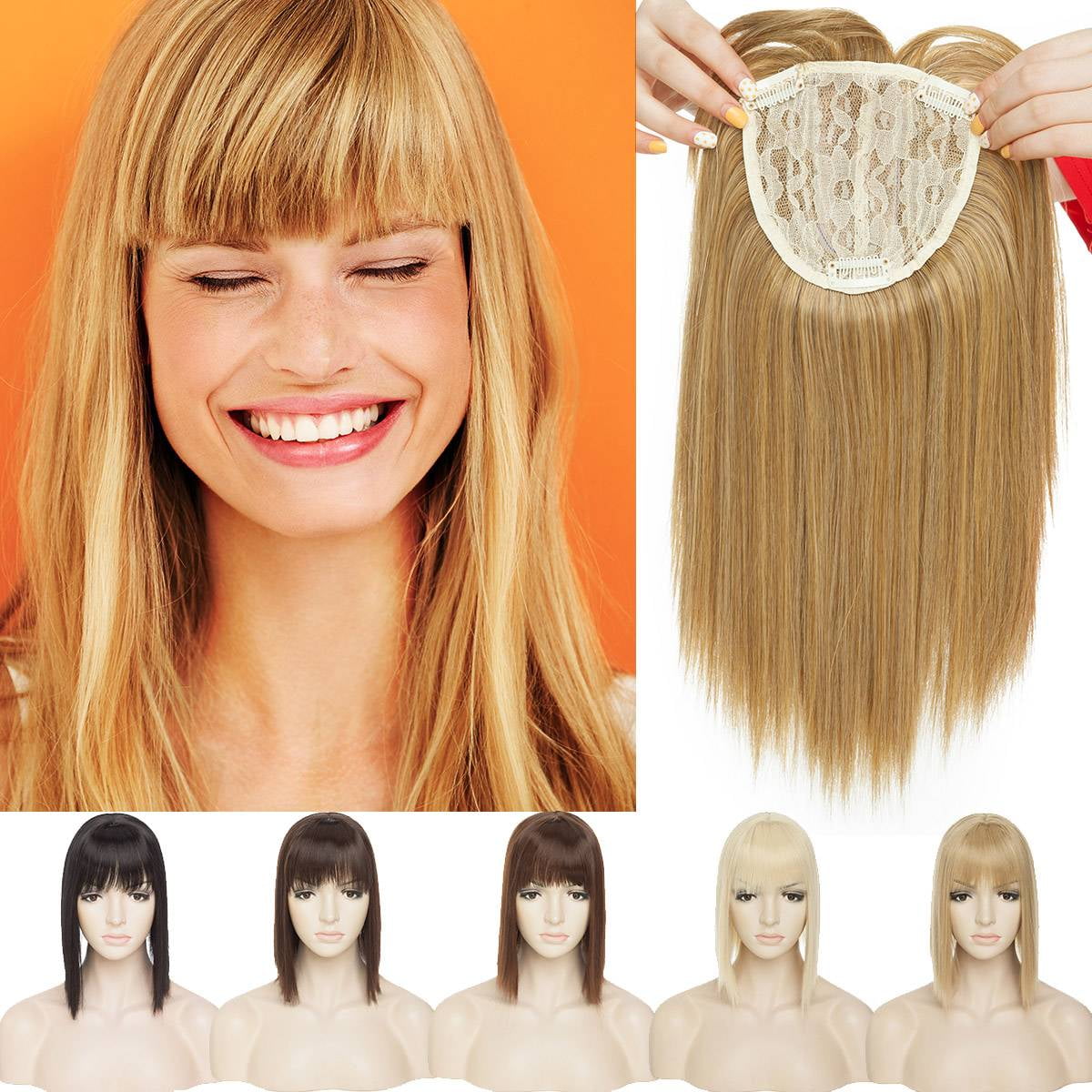Table Of Content

Trichorrhexis nodosa is the official name for hair breakage. It takes place mid-shaft while hair loss occurs at the scalp. For instance, if you see little hairs on the floor of different lengths, that’s a sign of breakage, says Dr. Lenzy. If your haircare practices are the culprit, you’ll see breakage throughout your hair.
Frontal fibrosing alopecia
You're most likely to see hair loss about 3 months after giving birth. That's because your estrogen levels drop after childbirth. If you're losing hair while pregnant, ask your doctor if you might have a dietary deficiency. You can lose hair during menopause as your estrogen and progesterone levels drop. Also, because hair follicles shrink during this time, your hair might be thinner, fall out easier, and grow more slowly.
The 4 Worst Haircuts That Draw More Attention To Thin Fine Hair Over 50, And What You Should Be Trying Instead
Alopecia areata is an autoimmune disease that causes hair to fall out in nickel- or quarter-size patches. “Your body’s immune system is attacking the hairs,” Brodell says. Hair loss and hair thinning can be temporary or permanent. It’s usually genetic, but it can also be triggered by diseases or disorders that attack the hair follicles.
Try to reduce stress
For starters, know that the term “alopecia” refers to all kinds of hair loss. There are two main types of alopecia, and then a variety of forms of hair loss within those two categories. In cases of non-scarring or temporary hair loss, the missing hair will eventually grow back. With scarring or permanent hair loss, permanent damage is done to the hair follicles so they won’t grow back. “With scarring hair loss, the goal is not for it to grow back, but to stop the progression,” says Dr. Lenzy.

Things that interfere with the growth cycle -- like medications, illnesses, infections, or chemicals -- have the potential to stop hair from being formed the right way. Beyond that, age, hormones, stress, and even the way you style your hair can lead to hair loss. While losing hair at a young age may be concerning, hair loss is a reality for many people as they age.
Hair Loss Treatments to Avoid
There are many other potential causes of hair loss in women. Treatment options for hair loss typically depend on the cause. They can also vary according to the pattern and location of hair loss. While most causes of hair loss are treatable, some may not be. Hair loss and hair thinning aren't precisely the same, though they are related. Hair loss refers to the significant reduction in the number of hair strands, leading to visible bald patches or overall decreased hair density.
Flat Hair Problems? Learn 20 Ways to Get Visible Lift and Volume
Thinning hair in women: Why it happens and what helps - Harvard Health
Thinning hair in women: Why it happens and what helps.
Posted: Wed, 03 Apr 2024 07:00:00 GMT [source]
People who experience thinning hair due to nutrient deficiencies, stress, pregnancy, and other nongenetic reasons could experience regrowth. "And then what happens is that density just simply decreases over time. And in extreme form, there can be absence of hair on the crown of the scalp." And while the signs might not be as obvious as in men, about 55% of women experience some hair loss by the time they're 70. Treatments to prevent or stop it can help many women who are losing their hair.
There are several looks that make the most out of naturally baby-fine texture without having to sacrifice length. A lot of women with curly hair are conditioned by the claims of volumizing hair products that often make them feel as if having thin hair is the worst thing in the world. Conversely, if you want to make your hair look fuller, you can do that too. Regular extensions won't hurt your hair, but they're designed to add length, not thickness. And because most are placed on the sides of the head, they can't add fullness at the top.
Always consult with a healthcare provider if you're concerned about hair thinning or loss related to medication. They can offer guidance or potential alternatives if the medication's side effects affect your hair. If a healthcare professional believes there is another underlying cause or the person does not respond well to OTC treatments, they can recommend other treatment options. Other factors may play a role in hair loss, such as inflammatory conditions that affect the scalp and hormone imbalances. Healthcare professionals may want to investigate these possible causes if the person does not respond to typical treatments. An older review from 2015 notes that using certain types of medicated shampoos may also help reduce and prevent hair loss.
This is the quintessential haircut to try if you have thin hair. Creating layers and snipping your hair is an incredible way to impart volume, as you cut strands at their thickest part, making hair look fuller. You can really have fun with the length too, as you go shorter in the back and longer in the front, creating depth and dimension to your face while also looking super modern. It's OK to use a round brush, hot rollers, blow driers, and curling -- or straightening irons. If you use gel or spray, comb your hair first, before it dries, or the strands will harden and get brittle.
If you have hair loss due to stress or hormone changes like pregnancy, you may not need treatment. The answer depends on your haircut, hair texture, and styling methods. A short, layered pixie or a blunt bob can volumize thin, straight locks.
While some people have naturally thin hair, if you noticed that your hair has suddenly become more sparse or has thinned out over time, it may be due to other circumstances. Keep scrolling to find out some of our go-to hairstyles for thin hair and learn what could be causing thinner strands. Just keep in mind FDA regulations for laser therapy aren’t the same as for medications, and experts have yet to determine long-term safety of laser therapy. That said, LLLT for hair loss seems to pose no major adverse effects. The FDA hasn’t labeled spironolactone as a treatment for androgenic alopecia. It’s typically used to reduce swelling from liver disease and nephrotic syndrome (a kidney problem).
There are several reasons why you might be losing your hair. According to Agbai, genetics, hormonal shifts, stress, underlying medical conditions, nutritional deficiencies, and scalp inflammation are notable factors. Understanding the underlying cause of your hair loss is absolutely necessary in determining the best approach to halt and reverse any further damage to your hair and scalp.
However, we do not guarantee individual replies due to the high volume of messages. Most of us shed hair a little at a time — pretty much all the time. All products are independently selected by our editors. If you buy something, we may earn an affiliate commission. If you're pregnant, planning to become pregnant, or breastfeeding, ask your doctor before taking minoxidil. It may be harmful to your unborn baby and can pass through breast milk to a nursing infant.
Sometimes, inflammatory conditions can cause a variety of symptoms, including hair loss. Spironolactone (Aldactone) is sometimes prescribed for people who have thinning hair related to aldosterone production (hyperaldosteronism). While technically a diuretic or “water pill,” that may be prescribed for high blood pressure or edema, Aldactone is an anti-androgen, too. Shampoos for thinning hair or hair loss also contain vitamins and amino acids to promote a healthier scalp.
When you’re an older woman ready to experiment with hair color, try a bold red with sporadic strands of black and lighter red. This combination stuns on a short thin hairstyle with bangs. Cornrows are an ideal protective hairstyle loved by women all over the world. Give your hair a break from heat styling by plaiting it into fine scalp braids.
No comments:
Post a Comment